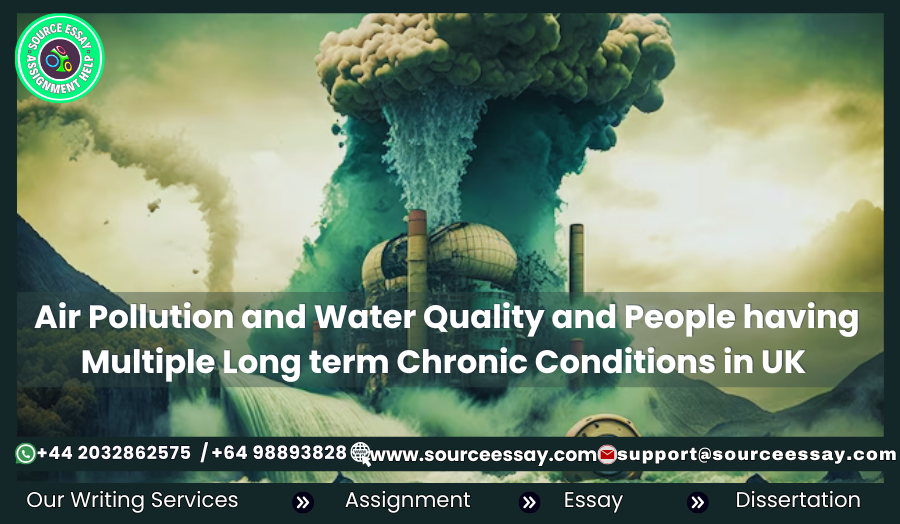The World Health Organization just issued data alerting us that 99% of the air we breathe exceeds WHO guidelines. It includes significant quantities of contaminants, and those dwelling in low and middle-income nations suffer from this exposure compared to those who are rich.
How Air Pollution is Destroying Our Health
Outdoor air pollution is increasingly a typical occurrence in both rural and urban regions. They produce particulate matter, which can result in lung cancer, heart disease, stroke, and chronic respiratory disorders. Addressing outdoor air pollution alone is insufficient; also, more than 2.6 billion people are exposed to harmful levels of home pollution.
The main sources of interior pollution are open flames and small stoves, which we use for looking. They can be powered by biomass, wood, animal dung, agricultural waste, coal, or kerosene.
To define multi morbidity
We recently saw that this is groundbreaking. It is done by the Health Lifespan Institute in collaboration with various factors such as environmental factors, air pollution, and water quality. It is co-led with multi morbidity. To define multi morbidity, it is the presence of two or more chronic health conditions, which is a growing global health issue affecting more than 37.2% of people worldwide in 2023. For example, in Serbia, the prevalence is slightly lower at 33.4%.
Research collaborated on an international platform
Research collaborated on an international platform: the Health Life Span Institute at the University of Sheffield, University of Belgrade, Aston University, and the Institute of Public Health of Serbia, the Environmental Protection Agency, and Mayo Clinic. All of them collaborated in order to find this valuable data for Global Health.
The search was supported by UKRI Global Challenge Research Fund and Sobia’s Minister of Science, Innovation and Technological Development. Data was also provided by the Institute of Public Health of Sobia, Dr. Milan, with the support from the World Health Organisation.
Health clusters and environmental factors
The research, which is titled ‘Inside the Relationship of Environmental Inequalities and Multi-Modality,’ studied multiple cases where clusters of individuals in Serbia had chronic health conditions.
They also try to examine the relationship between health clusters and environmental factors such as air quality and water pollution. This research also utilizes data from the European Health Interview Survey, which provides insights into the health status of the population across Europe.
Health cluster and categorized the study
The research identified a health cluster and categorized the study into six main clusters: lung diseases, muscle and bone disorders, diabetes and related metabolic conditions, health problems, and heart-related issues.
The key finding of the research is that multimorbidity is correlated with air pollution and water quality. This is identified by examining individuals residing in areas with elevated levels of particulate matter (PM10) and sulfur dioxide. These two elements are correlated with industrial emissions and traffic.
Individuals living in such areas, where high levels of particulate matter and sulfur dioxide are found, tend to have multi morbidity.
Chance of developing multi morbidity
Furthermore, research also underscores that individuals exposed to chemically polluted water may have a higher chance of developing multi morbidity. This research also discusses environmental pollution and how it is affecting specific populations, exhibiting health inequalities worldwide.
We need policy intervention
Certain countries and certain people are more prone to situations like this.
What research underscores is that we need policy intervention and some policy recommendations in order to eradicate the concerns of multi morbidity. First of all, addressing social, economic, and environmental factors is substantial for reducing multi morbidity, which are rising tremendously.
The targeted intervention of improving water quality, air quality, and combating climate change will mitigate health disparities that are happening all around the world due to various social, economic, and environmental factors. These factors should be improved in order to provide environmental justice.
Combat the problem of air pollution
We are approaching a critical commitment to combat the problem of air pollution. The World Health Organization collaborated and covered the inaugural Global Conference on Air Pollution and Health, which was held in Geneva from October 29 to November 21, 2018.
The main purpose of this seminar was to raise awareness about this developing public health concern. The organization and all of its collaborative partners offer information and resources about the health hazards of air pollution and how we can intervene to eliminate this issue.
World Health Organization’s greatest work
The symposium featured some of the World Health Organization’s greatest work, particularly on air pollution. This includes the creation of a worldwide platform for air quality and health. This platform’s members come from many backgrounds, including civil society, UN agencies, and other partner institutes. They especially look at statistics on air quality and health.
Understanding air pollution is crucial. The presence of one or more toxins in the atmosphere might be classified as air pollution. It might take the form of odor, smoke, vapor, fumes, dust, gas, or mist. It stays in the air for a long time and in large quantities, which can be harmful to humans.
online assignment help UK , homework help service UK , MBA assignment help online

